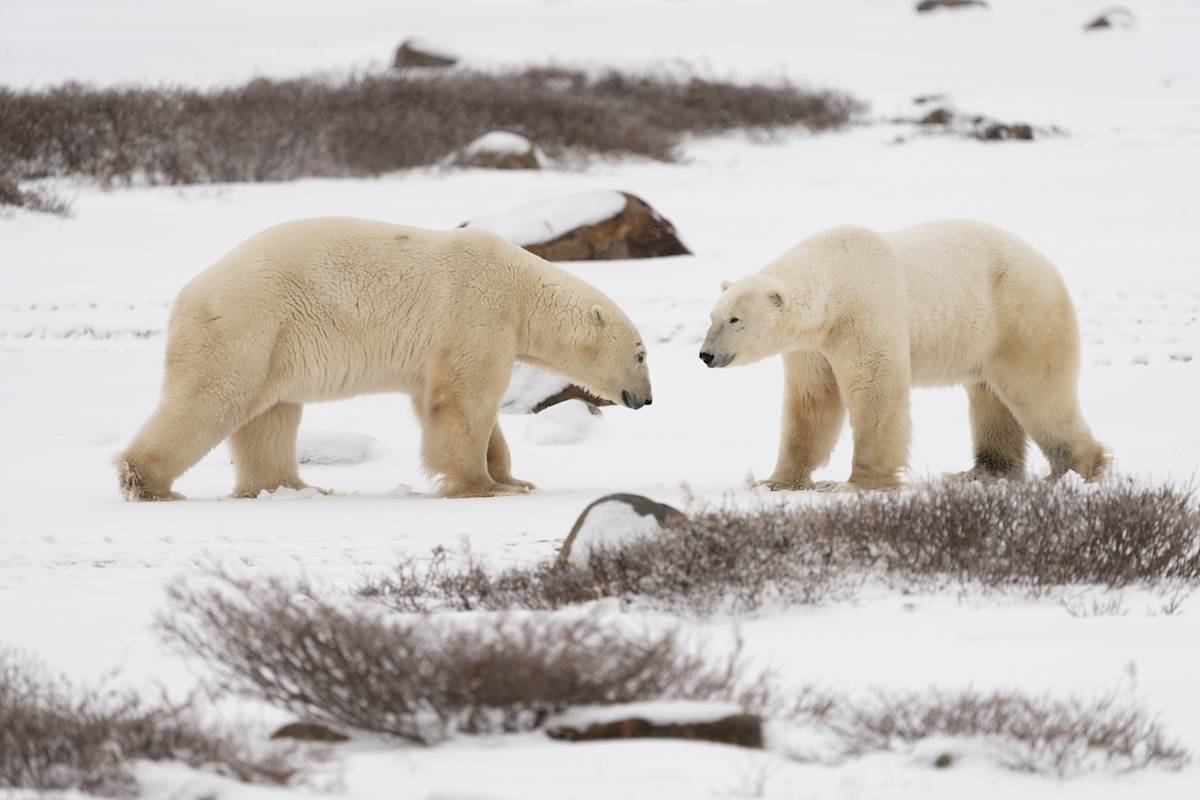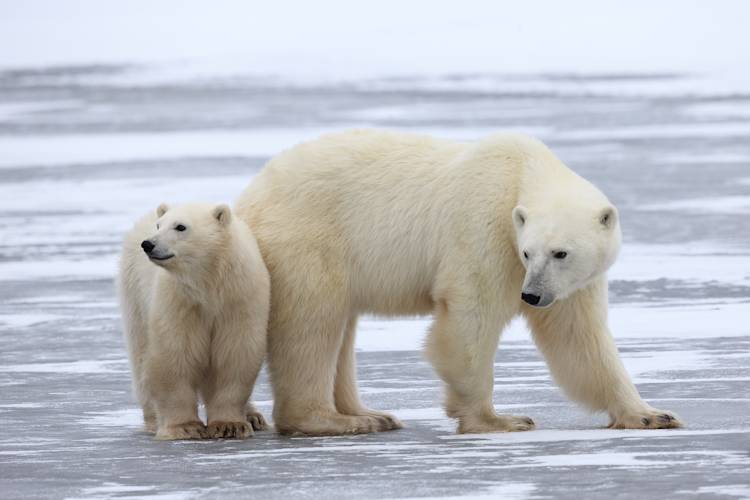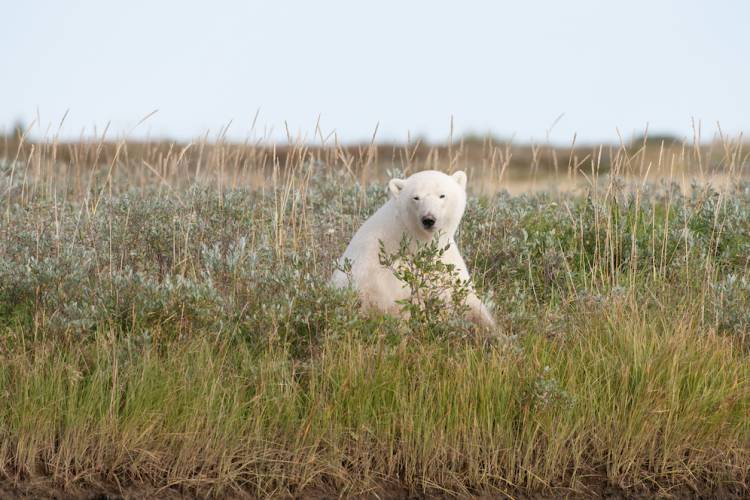Polar Bear Questions
I recently received this fascinating question from Sherlok: “I'd like to know how polar bear moms and cubs behave to each other if they meet some years later. Do they recognize each other? And can moms tell the difference between their own offspring and other bears?”
Great question—and one that's very relevant to a research project I'm working on at the moment, but more about that later. First off, I think we can all agree that polar bear moms are amazing. Every third year, if their body condition allows, the adult polar bear female gives birth to and nurses a litter of one to three cubs in her snowy maternity den, all while sustaining one of the longest fasting periods in the animal realm. And even after den emergence, she keeps producing the incredibly fatty milk that helps her cubs grown into healthy young adults. It is also during this period of two to three years that she teaches her cubs how to navigate the sea ice, how to avoid danger, and not least, how to become a successful seal hunter.
Does this close relationship between the polar bear mom and cubs mean that they would recognize each other if their paths crossed years after the young bears left mom and went their own way? For a social species such as our own, the answer would be a resounding YES, unless so much time had passed that we no longer looked the same. For polar bears, however, it may be a … maybe? There are anecdotal stories from the wild that indicate that polar bears might be able to recognize close family—but also some evidence in the literature that indicates the contrary. These include a handful of adoption cases from all around the Arctic, including Northeast Greenland, western Hudson Bay, Svalbard, and several places in the Canadian Arctic Archipelago, where polar bear moms were discovered with cubs that were not their own. A couple of examples:
From a 1996 scientific publication by a team of researchers led by Dr. Stephen N. Atkinson:
“On 5 March 1994, a ten-year-old adult female polar bear was captured as she emerged from an over-winter maternity den with her litter of two 3-month-old cubs. The mother, identified by numerically coded ear tags and lip tattoos applied during previous captures, was lactating heavily. Both cubs were fitted with uniquely identifying ear tags and lip tattoos. On 28 October 1994, after presumably spending the spring and early summer hunting seals on the sea ice, the same adult female was relocated by radio telemetry and again captured as part of our longitudinal study. She was still lactating but was now accompanied by three 10-month-old cubs, none of which had ear tags or lip tattoos or displayed any physical evidence of having been previously captured. Over the following month, this family group was resighted on two separate occasions.”
Another example, this time from Dr. Malenfant and colleagues, who in 2016 published a family tree of sorts for 4,449 Western Hudson Bay polar bears. This family tree—collected over six generations of bears sampled between 1966 and 2011—was based partly on DNA analysis and partly on in-field observations of relationships between individual bears (i.e.., family groups). The data documented six cases of cub adoptions, and further found that all adopted cubs appeared to be unrelatedto their adoptive mothers.
This potential inability to easily recognize one’s own offspring may be puzzling when you first hear about it. To understand why it could make sense for polar bears, we must consider their evolution and biology. First, this is a phenomenon that has also been observed in other species, including the one closest to polar bears: brown bears. Secondly, polar bears are largely solitary. The main exception to this is the family group. While in this family group, moms and cubs are rarely separated from each other. Add to this that polar bears generally only occur at low densities throughout the Arctic, and you soon realize that the chances of a family group crossing paths with other polar bears is so minimal that there may have been little pressure evolutionarily for the mom to instantly know her cubs from other cubs (and for the cubs to instantly know their mom from another female polar bear). There simply haven’t been enough encounters with bears outside the family group on an evolutionary scale for rapid recognition of close relatives to be a priority.
That, at least, is the theory so far. To further our understanding of kin recognition and social behavior in polar bears, we are currently planning a study to investigate whether family can recognize family—and if so, how far removed, and for how long? It’s one thing for a polar bear mother to recognize her cub, and for a cub to recognize their mother, but how about their dad, half-siblings, or cousins?
The answers we hope to produce will be important for our understanding of polar bear genetics and behavior: If polar bears recognize close family, would they behave differently towards them, even years after separating—or even if they’ve never met before, as is seen in some other species? Would they be less keen to mate with them, but perhaps be more willing to share resources such as a fresh seal kill? Would adult males recognize their own cubs of the year and be less likely to cannibalize them? These are fascinating questions, but also ones that are becoming more relevant to polar bear conservation as the Arctic continues its rapid warming.
Dr. Thea Bechshoft is a staff scientist with Polar Bears International, based in Aarhus, Denmark. Follow her popular Polar Bear Questions series on Facebook and Instagram—and ask a question of your own.















